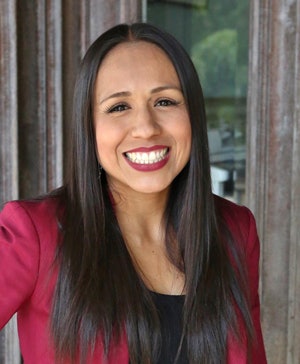Although Dr. Gina Ann Garcia is an advocate for equity and diversity, she didn’t always know that she wanted to build a career in higher education. But during her time in college, Garcia decided that she wanted to give people the same “transformative” experience that she had as a student.
 Dr. Gina Ann Garcia
Dr. Gina Ann Garcia“The longer I did it (work in the higher education field) and the more that I wanted to make a change, the more I realized that faculty in higher education have a little bit more power, I think,” says Garcia. She is currently an assistant professor in the Department of Administrative and Policy Studies at the University of Pittsburgh, where she teaches master’s and doctoral students pursuing degrees in higher education and administration and student affairs.
“I thought that it was a good idea to go the faculty route because I thought I could make a bigger change and have a bigger impact if I was faculty and if I did research that people recognize as important and that could lead to bigger change,” she says.
Garcia is a rising star within the academy and has been praised for her teaching and research skills. Her average master’s course consists of 20-30 students, and her average doctoral course consists of eight students. As an organizational theorist — someone who thinks about entire educational systems — her research focuses on Hispanic serving institutions and understanding how they have historically come to serve underrepresented students.
“I think about how an entire organization functions and the kind of research I do is focused on not just functioning but coming to believe in the value, the enrollment and the education of minority populations, like Latinos, low-income, first-generation students, immigrant students, undocumented students, (and) students who have been marginalized in education systems,”
Garcia says. “I’ve been thinking about how they actually value those folks and adjust to make sure they’re meeting the needs of those students.”
Garcia has written and co-written several publications about the experiences of students at HSIs, including their civic engagement and identity development. For example, her latest journal article titled “Defined by outcomes or culture? Constructing an organizational identity for Hispanic-Serving Institutions” highlights Garcia’s research and findings centered on the question of ‘What does it mean for postsecondary institutions to be Latinx serving?’ Additionally, she writes about race and racism, racial micro-aggressions and the experiences people have within institutions of higher education.
Garcia says that she has found joy in sharing her research with others as she actively works to try to move the needle on some of the country’s most vexing social challenges.
“I like trying to figure out how to address problems in education and how to develop a question and seek the answers to that question,” says Garcia. “People want research that supports what they do. So, the fact that I can apply that makes the work worth it,” she says.
Garcia explains that she is motivated by the belief that her research will have an impact and believes that it’s her duty to “actually convince people that institutions that serve populations that have been historically marginalized are good and that they’re doing good work, that people will support them and help them to be better institutions,” she says.
Prior to landing her tenure-track teaching job, Garcia held a number of jobs. She was the coordinator for transfer student services at California State University, Fullerton (CSUF), and worked with the Department of Education to establish programs for college students who are science, technology, engineering and math (STEM) majors at HSIs. After her time at CSUF, she was a research analyst at the Higher Education Research Institute at University of California, Los Angeles (UCLA), where she examined the curricular and extracurricular experiences that create success for students of color majoring in STEM.
When Garcia isn’t in the classroom or working on her research, she teaches fitness classes and considers herself a ‘fitness enthusiast’ and loves to run and do yoga.
Garcia says that she is inspired by her students who want to improve education.
“I think that working with people that I think can immediately have an impact, it drives me,” she says. “I know that if I can have an impact on the group of students I’m teaching, they’re likely to go out and make a larger impact and actually create change within their environment immediately. They are already doing it. They’re already thinking about it — thinking about making the change.”
In the future, Garcia says that she sees the possibility of also teaching undergraduates. “I do a lot of work with social justice and education … I think that undergrads are ready for that kind of teaching and learning,” she says.
Garcia received a B.S. in business administration and marketing at California State University at Northridge, an M.A. in college student personnel at the University of Maryland College Park, and an M.A. and Ph.D. in higher education and organizational change at UCLA.
- This story also appears in the August 24, 2017 print edition of Diverse.


![Mentor Mentee [60287]](https://img.diverseeducation.com/files/base/diverse/all/image/2024/04/Mentor_mentee__60287_.662959db8fddb.png?auto=format%2Ccompress&fit=crop&h=100&q=70&w=100)


















